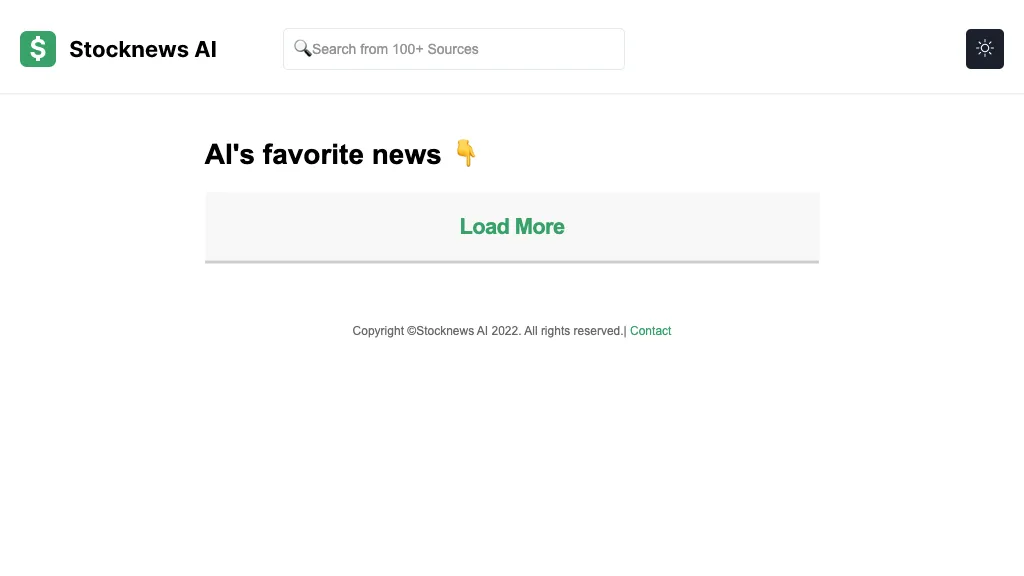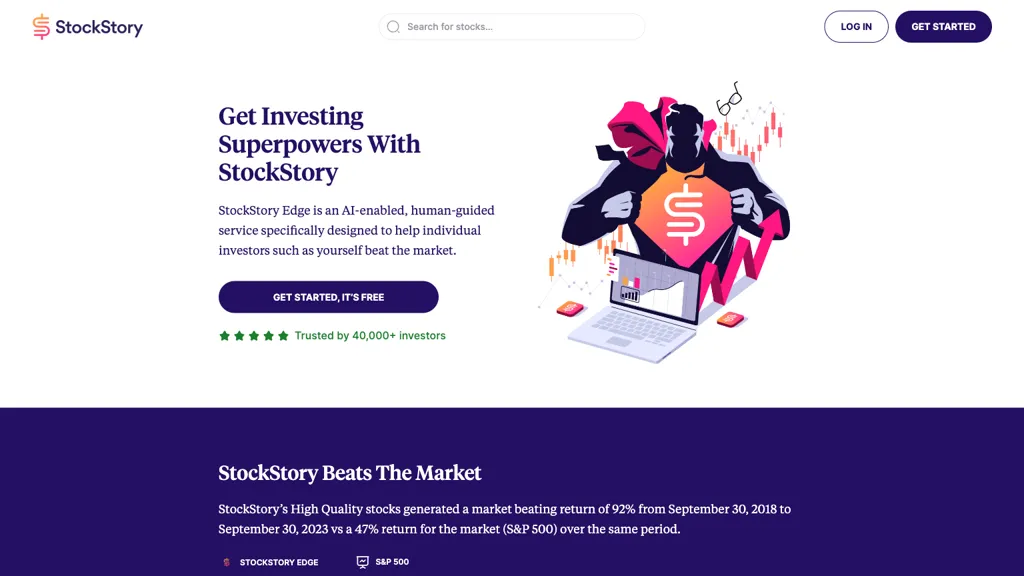20 Handy Ideas For Choosing AI Stock Investing Analysis Websites
20 Handy Ideas For Choosing AI Stock Investing Analysis Websites
Blog Article
Top 10 Suggestions On How To Assess The Strategy Customization Of Ai Trading Platforms
The capability to modify the trading platform according to your trading objectives and risk tolerance and the current market conditions is one of the key features of AI-powered stock prediction and analysis trading platforms. A platform offering a range of customizations can enhance your trading. Below are the top ten tips for assessing the strategy customization capabilities of these platforms:
1. Evaluate Pre-Built Strategy Templates
A variety of templates. Make sure the platform comes with a wide range of strategies pre-built to suit different types of trading (e.g. day trading, swing trading or long-term investment).
You are able to easily modify the templates and tailor them to meet your particular requirements.
Performance history: See if the platform offers historical performance statistics on the pre-built strategy.
2. Assess Custom Strategy Creation
Drag-and drop tools Find platforms that have intuitive drag-and-drop interfaces for creating unique strategies.
Coding options: For users who are more advanced make sure the platform allows custom coding using a proprietary scripting language (e.g. Python, R).
Flexibility - Make sure that the platform you select allows you to establish rules for the entry and exit of your business, as well as parameters to manage risk, as well as other essential components of your strategic plan.
3. Check for Backtesting Capabilities
Historical data: Ensure that the platform has sufficient historical data available to backtest strategies.
Flexible settings: Ensure you have the capability to change parameters during backtesting.
Performance metrics: Check whether the platform has detailed performance metrics, like win rates (e.g. Sharpe ratio) drawdown, win rate, and other metrics to determine if the strategies have been tested back.
4. Evaluate Real-Time Strategy Testing
Simulation or paper trading: Verify that the platform is compatible with paper trading that allow you to try out trading strategies in real time without risking any money.
Live testing is an excellent way to check whether your strategy is able to be tested in the real world market using tiny amounts.
Real-time adjustments - Determine whether you're able to adjust your strategies at a moment's notice based on the market conditions.
5. Integrate Integration and Technical Indicators
Indicator Library: Check that the platform includes a library of technical indicator (e.g. moving averages, RSI or MACD).
Custom indicators: Ensure that you have the ability to create or import custom indicators to incorporate into your strategies.
Combinations of indicators: Check whether the platform supports the combination of multiple indicators to create more complicated strategies.
6. Check for Risk Management Tools
Stop-loss/take-profit: Ensure the platform allows you to set stop-loss and take-profit levels within your strategies.
Size of the position: Determine if you are able to establish rules for sizing positions (e.g. fixed amount or a percentage of portfolio) to control the risk.
Risk-reward-ratio: Verify the platform's capabilities to set risk/reward ratios on specific trades or trading strategies.
7. Evaluate Multi-Asset Strategy Support
Asset Classes: Make sure that the platform supports strategies from multiple asset types (e.g. ETFs Forex, Options and Stocks).
Cross-asset Strategies: Determine whether it is feasible to develop strategies that combine different asset classes.
Market coverage: Determine whether the platform provides the services you need (e.g. US, international or cryptocurrencies).
8. Assess Automation and Execution
Automated trading: Ensure the platform supports automated execution of strategies based upon established rules.
Types of orders: Examine to see if the platform permits different types of orders (e.g. limit or market) in the course of executing a strategy.
Latency: Check that the platform is able to perform trades that have minimal latency particularly for strategies with high frequency.
9. Look for tools for optimizing your strategy.
Optimization of parameters: Make sure the platform provides tools for optimizing strategy parameters (e.g. grid search or genetic algorithms).
Integration of machine learning: Determine whether the platform incorporates machine learning to improve and improve strategies.
Analysis of scenarios: Check that the platform is able to test strategies in different market conditions (e.g., bear, bull, volatile).
10. Review Community Feedback and User Feedback
User reviews: Review user feedback in order to determine the platform's capacity to customize strategies.
Community forums Find out if there is an active community of users who discuss and share strategies.
Support resources: Ensure whether the platform offers tutorials, documentation, and webinars that can assist users in creating and implementing strategies.
Bonus Tips
Trial period: Use a free trial or demo to test the platform's strategy options for customization.
Scalability: Your platform should be able to accommodate more complex trading strategies as they evolve.
Customer support: Find out if you can get help in relation to strategy-related issues or questions.
By following these tips you will be able to effectively evaluate the ability to tailor strategies for AI trading platforms that predict and analyze stocks Be sure to select one that matches your goals in trading and permits you to apply and refine your strategies effectively. Platforms with strong customization capabilities can help you adapt to the changing market conditions and boost your trading performance. Take a look at the most popular ai investing app info for more recommendations including ai stock, ai trade, ai investing app, ai for investing, ai for stock trading, ai for stock trading, ai stock, ai for stock trading, ai for investing, ai stock picker and more.
Top 10 Ways To Evaluate The Latency And Speed Of Ai Stock Trading Platforms
The speed and the latency of a trading platform is a crucial factor to be considered, especially when it comes to active traders or high-frequency investors, as well as algorithmic ones. Even millisecond delays can have an impact on the success of trading. Here are the top 10 tips for assessing the speed and latency of these platforms:
1. Real-time Data Feeds to evaluate
Data delivery speed - Ensure that the platform can deliver real-time information with a minimum delay (e.g. the sub-millisecond delay).
Nearness of the data source: To cut down the time it takes to transfer data, verify if your platform's servers can be situated near major exchanges.
Data compression: Examine to see if there are efficient techniques for data compression that will speed up the delivery of data.
2. Test Trade Execution Time
Processing time for orders: Check how quickly the platform handles and executes trades once you have submitted an order.
Direct Market Access (DMA) Check to see if the platform supports DMA. This lets orders go directly to the exchange without the need for intermediaries.
Look for more detailed reporting on execution, which includes timestamps and confirmations of your order.
3. Assess the Platform Response
User interface (UI, or user interface speed) It is an indicator of how fast the platform's user interface responds to inputs you enter (e.g. clicking buttons, loading graphs).
Chart updates: Make sure that visualisations and charts update in real-time, without lag.
Performance of mobile app If you are using a mobile app on your phone, ensure that it runs as fast as the desktop version.
4. Check for low-latency infrastructure
Server locations The platform must use low-latency, high-speed servers that are close to major financial hubs or exchanges.
Co-location service: See whether the exchange offers co-location services, allowing you to host your trading algorithms on servers near to the exchange.
High-speed network: Check if the platform is using high-speed fibre-optic networks or other low latency technologies.
5. Assessing the speed of simulation and backtesting
Test how fast the platform processes and analyzes the historical data.
The latency of the platform must be minimal enough to permit real-time simulations of trades.
Parallel processing (or distributed computing) Find out what platforms use the concept of parallel processing or distributed processing in order to accelerate the complexity of calculations.
6. Calculate API Latency
API response time Observing how fast the platform's API responds (e.g. retrieving market data or placing orders).
Rate limits: Ensure that the API is within reasonable limits for rates so that there are no delays during high-frequency trading is taking place.
WebSocket Support: Determine whether your platform is compatible with WebSocket protocols for streaming data in real-time and with low latency.
7. Test the stability of the platform under load
High-volume trading: Play high-volume trading scenarios to see if the platform remains steady and responsive.
Market volatility Test the platform in times of extreme market volatility to see if it can handle rapid price fluctuations.
See if there are tools available for testing strategies in extreme situations.
8. Evaluate network and connectivity
Internet speed requirements. Ensure that your internet connection meets minimum speeds recommended for your platform to guarantee optimal performance.
Redundant Connections: To minimize interruptions, make sure that the platform is able to support redundant internet connections.
VPN latency: If you are using a VPN, verify whether it has a significant amount of latency, and if the service offers alternatives.
9. Look for features to speed up your performance.
Pre-trade Analytics: Be sure the platform has pre-trade analytics to improve order routing, execution speed and many other aspects.
Smart order route (SOR) The first step is to see whether SOR is used by the platform in order to determine the fastest and cost-effective execution venues.
Use the tools available on the platform to analyze and monitor latency in Real-Time.
Review user feedback and benchmarks
Feedback from users: Use reviews from users to assess the platform's performance in terms of speed and latency.
Third-party benchmarks: Search for independent benchmarks or reviews comparing the speed of the platform to other platforms.
Case studies and testimonials Check whether there are any cases that show the low-latency capabilities of the platform.
Bonus Tips:
Trial period: Try an unpaid trial or demo to test the platform's speed and latency in real-world situations.
Support for customers: Check to find out if the platform offers assistance with issues related to latency or optimization.
Hardware requirements: Find out whether you require specific equipment to achieve the highest performance (e.g. high-performance PCs).
By using these tips, it is possible to precisely assess the speed, latency, and precision of AI software for analyzing and predicting stocks. This allows you to select a platform according to your specific needs in trading and minimize any delays. Platforms that are low-latency are vital for traders who use high-frequency algorithms. The slightest delay can adversely affect their earnings. Read the best investing with ai tips for blog tips including best ai stock prediction, ai stock predictions, stock predictor, ai stock price prediction, ai tools for trading, ai stock prediction, best ai stocks to buy now, ai share trading, ai stock investing, ai stock analysis and more.